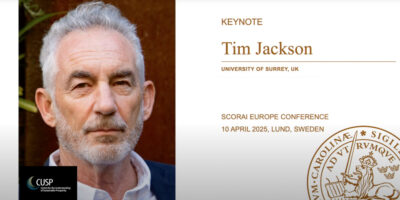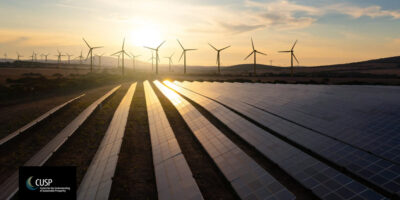Analysing dreams; abandoning nightmares
In this blog Angela Druckman explains how CUSP is collating visions of the future, and exploring which types of economic systems may make the achievement of sustainable prosperity more plausible.
Blog by ANGELA DRUCKMAN

Have you thought about what the future may be like in thirty, sixty or one hundred years’ time? Do you envisage some sort of utopia in which everyone, rich and poor, has the ability to flourish? Or is your vision more of a nightmare, in which we are struggling to feed the world population, wars are waging over water shortages, and refugees from countries devastated by the effects of climate change abound?
In CUSP’s System Dynamics theme, we will pull together various contrasting visions that emerge from the research carried out in other themes in CUSP, and complement these with visions put forward by thought-leaders from outside the centre. We will focus on positive views of the future, leaving nightmares firmly tucked under our pillows.
Our narratives will explore the different types of economic systems that may enable people to flourish. What types of jobs will they be working in? Might there be mass employment in the caring industries and in the arts, with less focus on the environmentally damaging, resource intensive industries that characterise our current materialistic, consumer societies? To what extent might we embrace technological innovations, and thus achieve a low carbon ‘technotopia’ in which many of our children and grandchildren lead lives of leisure? Will the dominant form of companies be social enterprises with environmental or social purposes at their core? Might a new form of moralism underpin the way markets function, the flows of capital, and the corporate governance systems?
Such dreams and visions are all very well: they are an excellent way of conjuring up rich pictures of what different futures may look like. But to fully understand the macro-economic systems on which such sustainable societies of the future may depend, we need to carry out robust and rigorous analysis – and not many of us analyse economic systems in our dreams! In CUSP Theme S2 we are developing macro-economic models. Using these models we will explore the social, environmental and economic dimensions of selected visions, to better understand the possible ways forward, albeit with the limitations of such models always in our minds. The results will provide political, civil and corporate leaders guidance concerning the probable outcomes and impacts arising from such transformations of our economies and lifestyles. Thus we may hope that our dreams of sustainable prosperity may become reality, and we may abandon our nightmares altogether.



